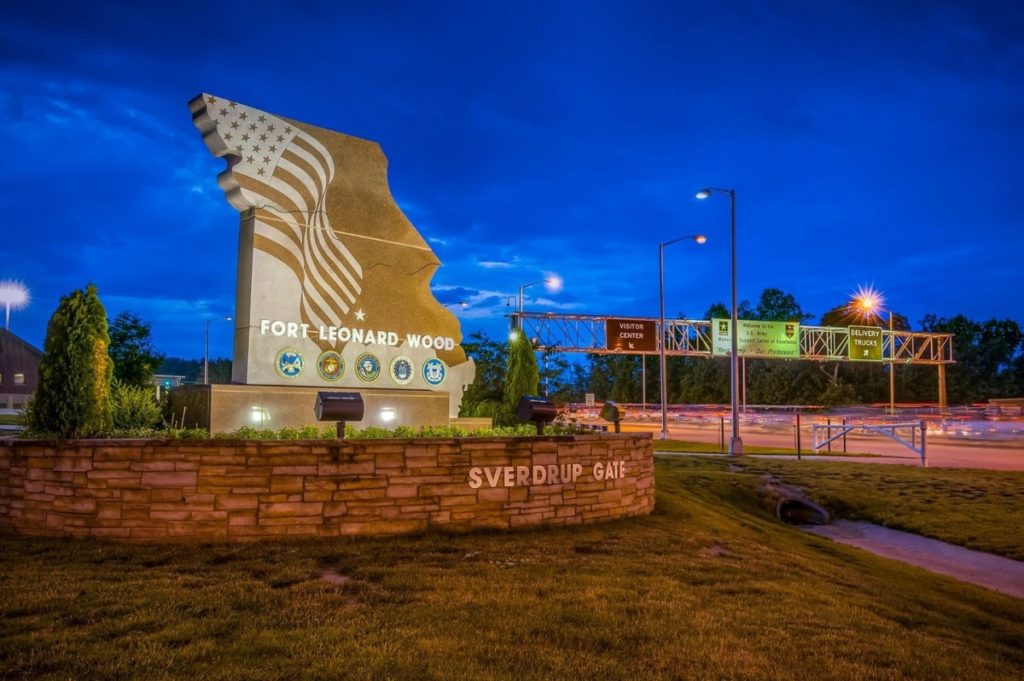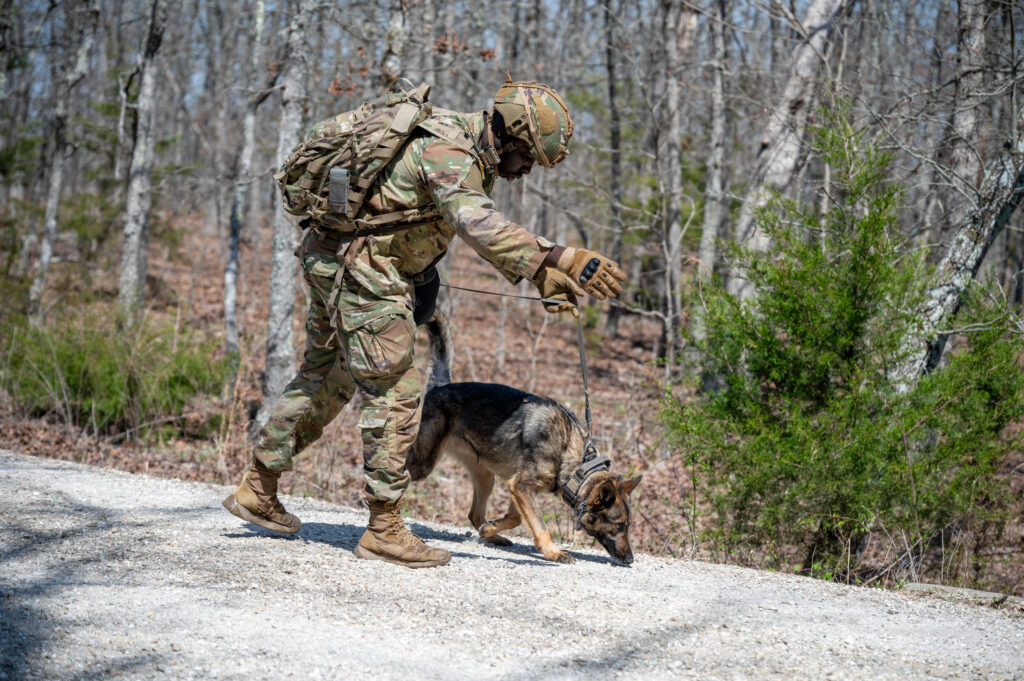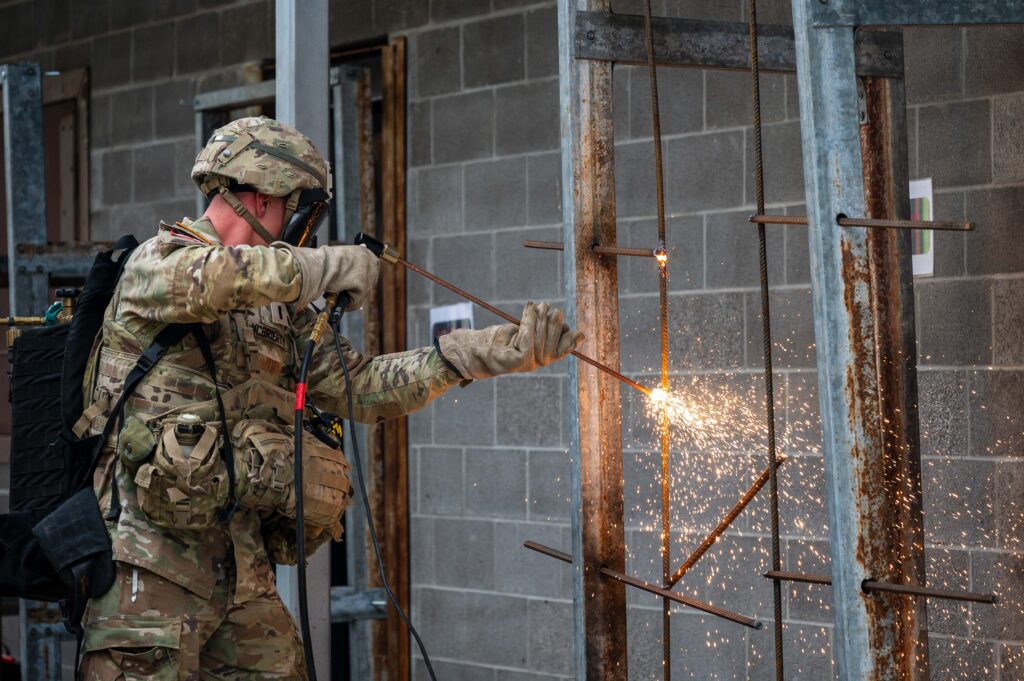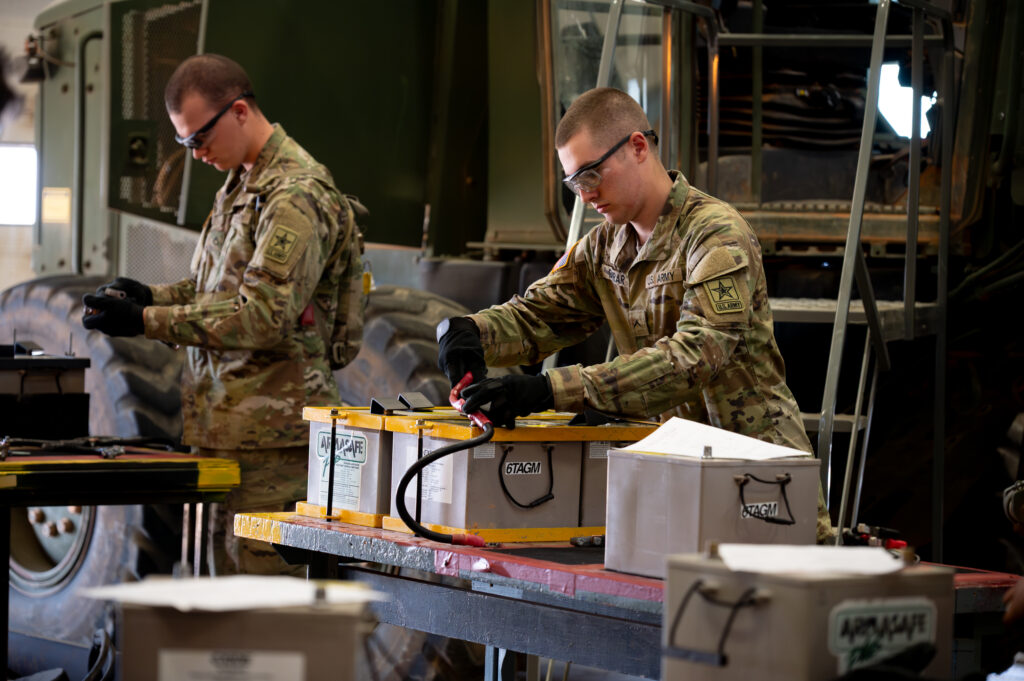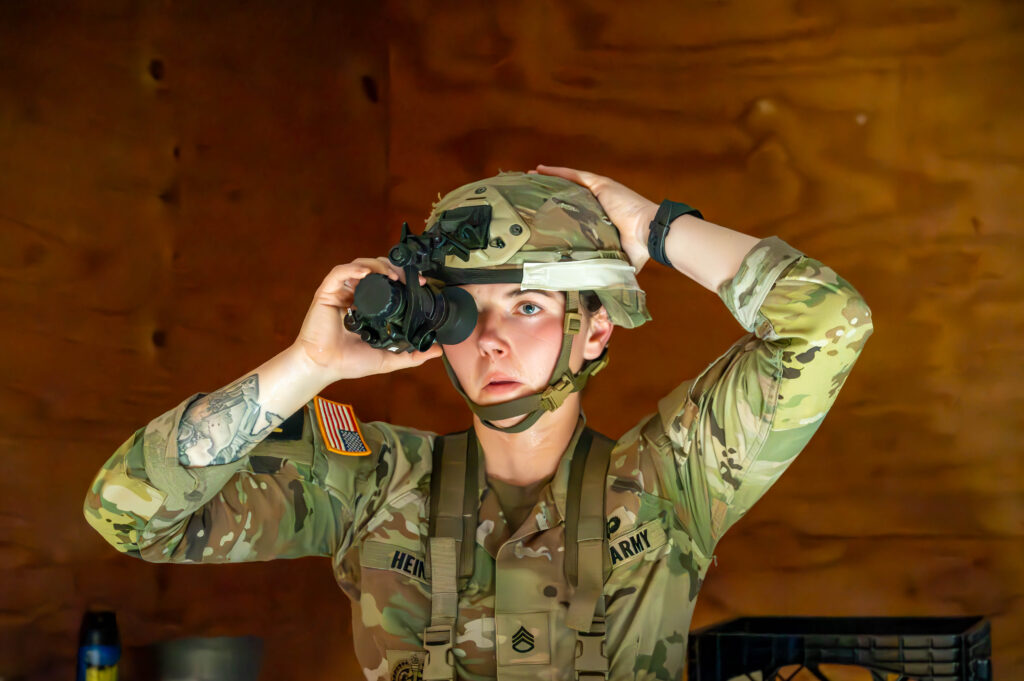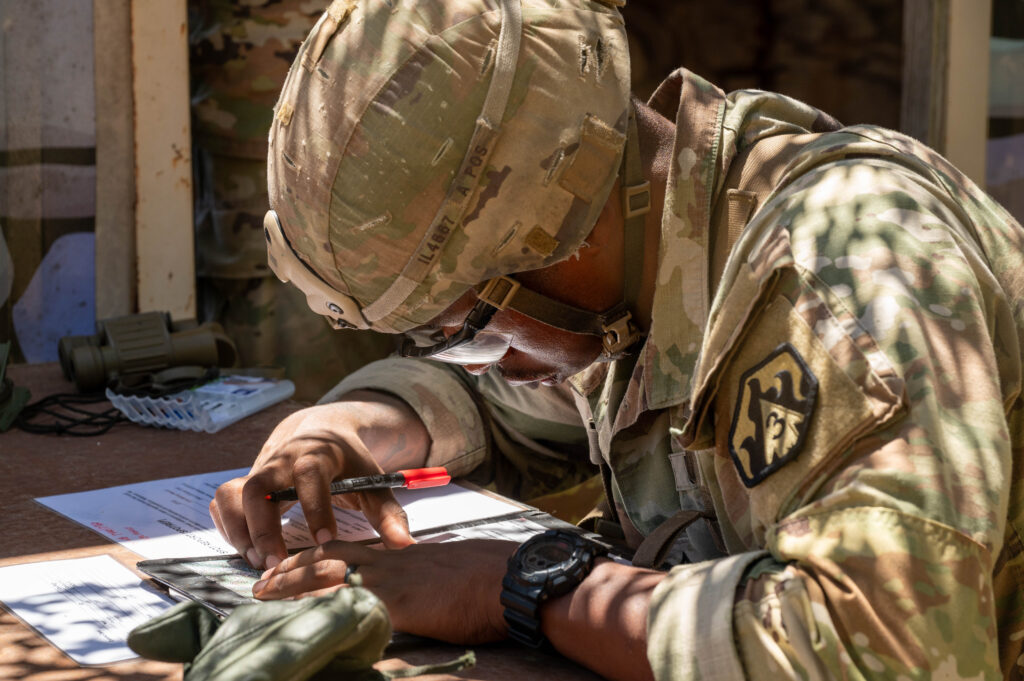Brian Hill
FORT LEONARD WOOD, Mo. (July 23, 2020) — A cloud of black smoke was visible around the installation for about an hour today as the Fort Leonard Wood Fire Department conducted flammable liquids training at their fire and rescue training area near Forney Airfield.
The scenario had two hose teams attempting to extinguish 250 gallons of JP-8 jet fuel as it burned on the surface of a water-filled aircraft fuel training pit. During this training the firefighters used hose streams to push the fuel away from a simulated aircraft in the pit while protecting it and simultaneously confining and extinguishing the fire.
According to Troy Michels, Fort Leonard Wood Fire Department assistant chief of training, the goal of the training was to make the firefighters work as a team.
“During a real fuel fire, we would be utilizing an aqueous foam to put a blanket over the fuel, smothering the fire and fumes – making it easier to put out,” he said. “The two teams did a really good job with only utilizing water out of the hand lines.”
Michels said these training scenarios are important as Fort Leonard Wood and Forney Airfield continue to grow.
“We are having more and more large frame aircraft flying in and out of Forney Airfield every day and there are also large amounts of flammable liquids stored on and transported around the installation each day,” he said.
Regarding the training, officials said it is important to work with the Directorate of Public Works Environmental Division.
“Our fire department worked with DPW Environmental to ensure everything was in compliance with environmental regulations during this training,” said Charlie Neel, DPW Environmental Division chief.
In addition to the need for fire and rescue response on Fort Leonard Wood, Michels said mutual-aid agreements with fire departments in the surrounding communities make the training even more crucial.
“We have agreements to respond out on Interstate 44 and railways in the surrounding area where large amounts of flammable liquids are transported daily,” he said. “So, for these reasons and many more it is important for us to stay proficient at extinguishing these types of fires.”
Not only do the installation’s firefighters train on flammable liquids, they also get regular training on structure fires, aircraft egress, vehicle extrication, hazardous materials and natural cover fires, such as grass, brush and forest fires. They also receive emergency medical and rescue training – in confined spaces, on water and in high- and low-angle situations.
“Our fire and rescue responders have to be ready at a moment’s notice,” Michels said. “We are constantly training to maintain an effective team, no matter what situation we’re faced with.”
In May, the installation’s fire department responded to a multi-vehicle crash that resulted in a tractor-trailer fire down a steep embankment alongside Interstate-44.
“Our crews arrived and assisted with putting out the fire, searching for the driver and bringing water to the scene – which we have to do any time there’s a highway fire because there are no hydrants out there,” said Fort Leonard Wood Fire Chief Brad Bowling. “The training today was intended to simulate an aircraft accident, but this scenario could easily playout on I-44. If a tanker truck were to catch fire, we would have the same high-volume fuel fire scenario that we practiced for today.”


-30-
About Fort Leonard Wood
Fort Leonard Wood is a thriving and prosperous installation that has evolved from a small basic training post more than 75 years ago to a premier Army Center of Excellence that trains more than 80,000 military and civilians each year.
Fort Leonard Wood is home to the U.S Army Maneuver Support Center of Excellence and three U.S. Army schools: the U.S. Army Engineer School; U.S. Army Chemical, Biological, Radiological and Nuclear School; and the U.S. Army Military Police School. In addition to training engineer, CBRN and military police specialties for the Army, Fort Leonard Wood also provides gender-integrated in-processing and Basic Combat Training for new Soldiers.
Fort Leonard Wood also hosts and trains with the largest Marine Corps Detachment and Air Force Squadron on any Army installation as well as a large Navy construction detachment.
More information about Fort Leonard Wood is at: https://home.army.mil/wood/index.php/about/mission
